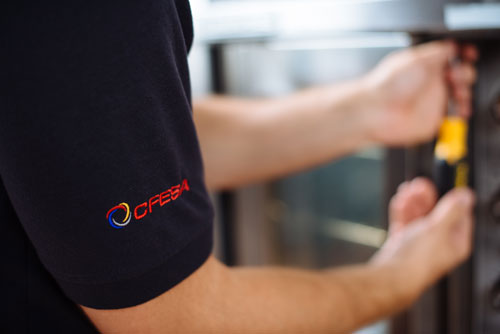
With the added challenges of COVID-19, employees are under greater pressure to deliver the same high expectation to your guests with fewer resources at their disposal. If a critical piece of equipment goes down, it can have detrimental consequences. Menu items are cancelled. Production and/or storage shifts to a less efficient alternative. Revenue is lost at a time when it matters more than ever.
You’re left asking: Why does this happen at the most inopportune time? What do I do now? How quickly can I have this unit repaired?
Your service vendor group exists to support successful operation of your business; on the attention scale, they fall somewhere well below employee management, food cost, and procurement. The reasons for this are clear ―equipment is a long-term investment that may not require your consistent attention. When you are forced to respond to an urgent situation, your attention level is high given the amount of revenue that piece of equipment produces for your business. In addition, you now require the full attention of your service provider to execute a repair as quickly as possible.
Reactive repair costs are often unexpected and unplanned for in your annual budget. How can you mitigate not only the financial impact but the stress for you and your employees?
A good service provider wants to not only meet or exceed your service level expectation, but support your business’ overall success and create a long term, sustainable partnership by adding value and insight to your equipment’s use, service, and life cycle.
Given the constant introduction of new technology into the commercial kitchen environment, one tip or best practice won’t comprehensively solve your need for knowledge and the application of it within your operation.
Consider an engaged service partnership with your warranty authorized service provider. Getting to know them and asking their perspective on service can help you and your teams understand the opportunities to control and plan for your annual repair and maintenance costs. Here are three key areas of focus in creating a value added relationship, with examples:
Education
- Cleaning and end user maintenance – best practices
- Following manufacturer’s guidelines to maximize warranty coverage
- Preparatory measures for your equipment prior to night cleaning service
- Checklist before placing a service call – reduce unnecessary service cost
Communication
- Setting clear expectations for service – avoid times, site access, safety protocol
- List of contacts in your organization for service coordination and authorization
- Your team builds relationships with your service technicians and a service leader from your provider
- Providing information to maximize the opportunity for a first time fix – photos, error codes, impact of unit within the operation
- Identification of equipment by tagging supports efficient service call requests, asset management, and capital expenditure planning
Engagement
- Annual business review with your service partner
- Ask them to provide a service spend report and discuss during review
- Invite their input to contribute to your capital expenditure planning for equipment
- Shared understanding of repairing vs. replacing a piece of equipment
- Discuss the value and ROI of planned maintenance on critical equipment
Entering into an engaged partnership with your warranty authorized service provider may provide many benefits besides maximizing your equipment’s life cycle, perhaps most notably a higher degree of confidence and comfort around what can be a stressful area of your business. Taking responsibility of maintaining your equipment creates a sense of ownership within your employee group, fosters strong organizational culture and increases employee retention. Well-maintained equipment uses less energy and reduces environmental impact.
Top performing operators and organizations who partner closely with their service network maximize equipment uptime, and in turn, their revenue and profit. If you don’t have this type of relationship with your service provider, consider challenging yourself and your provider to achieve more together ― it will provide value to you both now, during the COVID-19 pandemic, and into the future.
Content sponsored by Parts Town & Heritage Parts.



